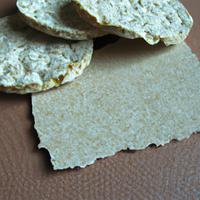
1 serving (30 grams) contains 110 calories, 3.0 grams of protein, 1.0 grams of fat, and 22.0 grams of carbohydrates.

Log this food in SnapCalorie

Nutrition Information
Calories |
880.0 | ||
|---|---|---|---|
% Daily Value* |
|||
| Total Fat | 8.0 g | 10% | |
| Saturated Fat | 1.6 g | 8% | |
| Polyunsaturated Fat | 0 g | ||
| Cholesterol | 0 mg | 0% | |
| Sodium | 1200 mg | 52% | |
| Total Carbohydrates | 176.0 g | 64% | |
| Dietary Fiber | 24 g | 85% | |
| Sugars | 8.0 g | ||
| protein | 24 g | 48% | |
| Vitamin D | 0 mcg | 0% | |
| Calcium | 80.0 mg | 6% | |
| Iron | 4.0 mg | 22% | |
| Potassium | 400.0 mg | 8% | |
* Percent Daily Values are based on a 2,000 calorie diet. Your daily values may be higher or lower depending on your calorie needs.
Food Attributes
Source of Calories
About Crisp breads
Crisp breads are thin, dry crackers commonly made from whole grain rye or wheat flour, seeds, and sometimes alternative flours like oat or spelt. Originating from Scandinavia, these versatile snacks have been a dietary staple in Nordic cuisine for centuries. They are low in fat, light in texture, yet packed with fiber, making them a popular choice for those seeking a healthier alternative to standard bread. Crisp breads are often enjoyed plain or topped with spreads, cheeses, vegetables, or smoked fish, offering both nutritional variety and balance. They’re naturally low in calories, making them ideal for weight-conscious diets, although some pre-packaged varieties may contain added salts or sugars, so checking labels is essential. Their whole grain content contributes to digestive health and provides sustained energy. Whether part of a meal or snack, crisp breads are a wholesome, versatile choice for health-focused eaters.



